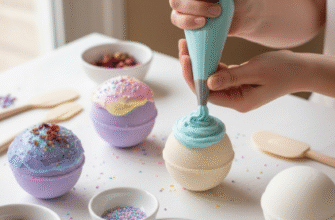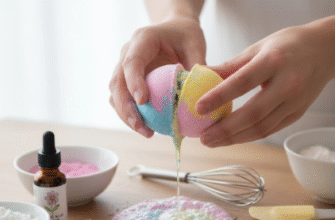Has your hair seen better days? Maybe too much fun with the flat iron, a colour experiment gone sideways, or just the general wear and tear of life has left your locks looking a bit stressed, frizzy, and desperately thirsty. Before you resign yourself to a life of ponytails or consider a drastic chop, know that there’s hope waiting right in your kitchen. Forget expensive salon treatments for a moment and let’s explore the wonderfully effective world of DIY hair masks specifically designed to give damaged hair some much-needed TLC.
Dealing with damaged hair can be frustrating. It often feels dry, brittle, tangles easily, lacks shine, and might even show signs of split ends or breakage. This happens when the hair’s outer protective layer, the cuticle, gets lifted or damaged, exposing the inner core and allowing precious moisture to escape. Restoring that moisture and smoothing the cuticle is key to bringing back a healthier appearance and feel.
Why Turn Your Kitchen into a Hair Spa?
You might wonder why you should bother mashing up avocados when countless products line the store shelves promising miracle cures. Well, there are some pretty compelling reasons:
- Natural Goodness: You know exactly what’s going into your mask. No mysterious chemicals, harsh sulfates, or silicones that can sometimes build up or cause irritation. It’s all about harnessing the power of nature.
- Cost-Effective Care: Let’s be honest, salon treatments and high-end hair products can put a dent in your wallet. Using ingredients you likely already have saves money while still providing great benefits.
- Customizable Concoctions: Your hair is unique! DIY masks allow you to tailor the ingredients to your specific needs. Need more moisture? Add extra oil. Fighting frizz? Banana is your friend.
- It’s Fun!: There’s a certain satisfaction in whipping up your own beauty treatments. It’s a mini-pampering session you create yourself.
Powerhouse Ingredients for Hair Repair
Nature provides an amazing pantry of ingredients that can help nourish and condition damaged hair. Understanding what these simple items offer can help you choose the best ones for your mask:
Avocado
This creamy fruit isn’t just great on toast! Avocados are packed with natural oils, fatty acids, and vitamins (like Vitamin E) that are fantastic moisturizers. They penetrate the hair shaft, providing deep hydration and helping to smooth down that roughed-up cuticle layer. This results in softer, shinier, and more manageable hair.
Banana
Rich in potassium, natural oils, and vitamins, bananas can help improve elasticity, preventing breakage and split ends. They are also great for adding moisture and shine, and their silica content can contribute to smoother, stronger-feeling hair. Make sure you blend it extremely well to avoid little chunks!
Honey
Honey is a natural humectant, which means it attracts and locks in moisture. This makes it incredibly hydrating for parched strands. It also has emollient properties that help smooth the hair cuticle, adding shine and reducing frizz. Raw, unprocessed honey often contains more beneficial nutrients.
Olive Oil or Coconut Oil
These oils are champions of moisture. Olive oil is rich in fatty acids and antioxidants, penetrating the hair shaft to nourish from within. Coconut oil is known for its ability to reduce protein loss from hair, helping to keep it stronger. Both add slip, making detangling easier, and impart a beautiful shine. Choose extra virgin olive oil or unrefined coconut oil for the best results.
Egg (Especially the Yolk)
Eggs are a source of protein and fats. Hair is primarily made of protein (keratin), so applying protein can help temporarily fill in gaps in the damaged cuticle, strengthening the hair shaft. The yolk is particularly rich in fats and vitamins, offering excellent conditioning benefits. Use with caution if your hair is protein-sensitive (it might feel brittle after), and always rinse with cool water to avoid cooking the egg in your hair!
Yogurt or Mayonnaise
Plain, full-fat yogurt contains lactic acid, which can gently cleanse the scalp, and fats that moisturize the hair. Mayonnaise, essentially made of oil and eggs, provides intense moisture and protein, making it a classic (if slightly smellier) choice for deep conditioning.
Your Go-To Damaged Hair Repair Mask Recipe
Ready to mix things up? Here’s a potent blend designed to tackle dryness, brittleness, and lack of shine. It combines deep moisture, vitamins, and smoothing properties.
Ingredients:
- 1/2 Ripe Avocado (well-mashed)
- 1/2 Ripe Banana (very well-mashed or blended)
- 1 Tablespoon Olive Oil (or melted Coconut Oil)
- 1 Teaspoon Honey (optional, for extra moisture)
Instructions:
Step 1: Prepare the Fruit: The key to a non-lumpy mask is thorough mashing or blending. Mash the avocado and banana together in a bowl until completely smooth. Seriously, aim for baby-food consistency. Using a blender or food processor is highly recommended, especially for the banana, to avoid finding fruit bits in your hair later.
Step 2: Combine Ingredients: Add the olive oil (or melted coconut oil) and the optional honey to the fruit mash. Stir everything together until you have a smooth, creamy paste.
Step 3: Application: It’s best to apply the mask to damp, towel-dried hair. Section your hair to ensure even coverage. Start applying the mask generously from the mid-lengths down to the ends, as this is usually where damage is most concentrated. You can apply closer to the roots if your scalp is also dry, but avoid it if you have oily roots.
Step 4: Let it Penetrate: Once your hair is fully saturated, pile it loosely on top of your head and cover it with a shower cap or plastic wrap. This traps heat, helping the mask penetrate more effectively. Leave the mask on for at least 30 minutes. For a deeper treatment, you can leave it on for up to an hour.
Step 5: Rinse Thoroughly: This is crucial! Rinse your hair very well with lukewarm water. You might need to rinse longer than you think to get all the mixture out. Follow up with your regular shampoo (you might only need one wash, or possibly two gentle ones) and conditioner. Using conditioner afterwards helps to seal the cuticle and lock in the benefits of the mask.
Make It Your Own: Customization Ideas
Feel free to adjust the recipe based on your hair’s specific needs:
- Fine Hair: Reduce the amount of oil slightly, or focus application strictly on the ends to avoid weighing hair down.
- Very Dry/Coarse Hair: Increase the amount of oil, add a tablespoon of mayonnaise, or swap the banana for a whole avocado.
- Frizzy Hair: Ensure the banana is super smooth; adding a bit more honey can also help tame frizz.
- Dull Hair: A teaspoon of apple cider vinegar added to the mix (or used as a final rinse – diluted!) can boost shine by smoothing the cuticle.
Important Considerations: Always perform a patch test on a small, hidden section of your hair and skin (like behind the ear or on the inner elbow) 24 hours before applying a new DIY mask fully. This helps check for any potential allergic reactions or sensitivities to the ingredients. Remember that consistency is key with natural treatments; while you might feel immediate softness, lasting improvement comes with regular use. These masks condition and improve the appearance of damage, but they cannot magically fuse split ends back together – trimming remains the only true solution for those.
Beyond the Mask: Holistic Hair Care
While this DIY mask is a fantastic treatment, supporting your hair’s health involves more than just occasional deep conditioning. Consider incorporating these habits:
- Gentle Cleansing: Use sulfate-free shampoos and don’t wash your hair more often than necessary. Over-washing strips natural oils.
- Cool Rinse: Finish your shower with a cool water rinse to help seal the hair cuticle.
- Minimize Heat: Reduce the use of blow dryers, flat irons, and curling wands. When you do use them, always apply a heat protectant spray first.
- Protect Your Strands: Wear a hat in the sun, protect hair from chlorine when swimming, and sleep on a silk or satin pillowcase to reduce friction.
- Regular Trims: Getting trims every 6-8 weeks helps remove split ends before they travel further up the hair shaft.
- Be Gentle: Avoid aggressive towel drying (blot instead) and use a wide-tooth comb to detangle, starting from the ends and working your way up.
Embrace the Journey to Healthier-Looking Hair
Repairing the appearance of damaged hair takes time and consistent effort, but incorporating a nourishing DIY mask into your routine can make a noticeable difference. It’s a simple, natural, and affordable way to infuse your strands with moisture, vitamins, and lipids, helping to restore softness, manageability, and shine. So raid your kitchen, whip up this potent potion, and treat your hair to the loving care it deserves. You might be surprised at how much better your hair looks and feels after just one treatment, and even more impressed with the cumulative results over time. Happy masking!








